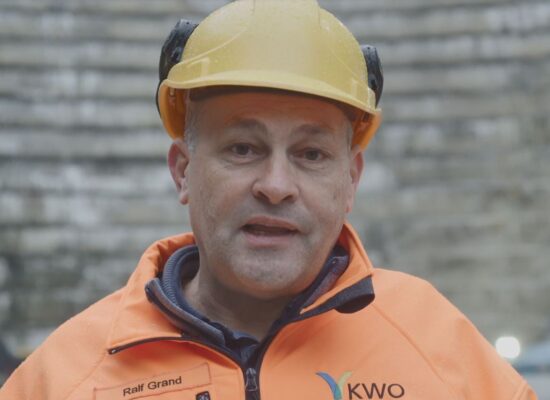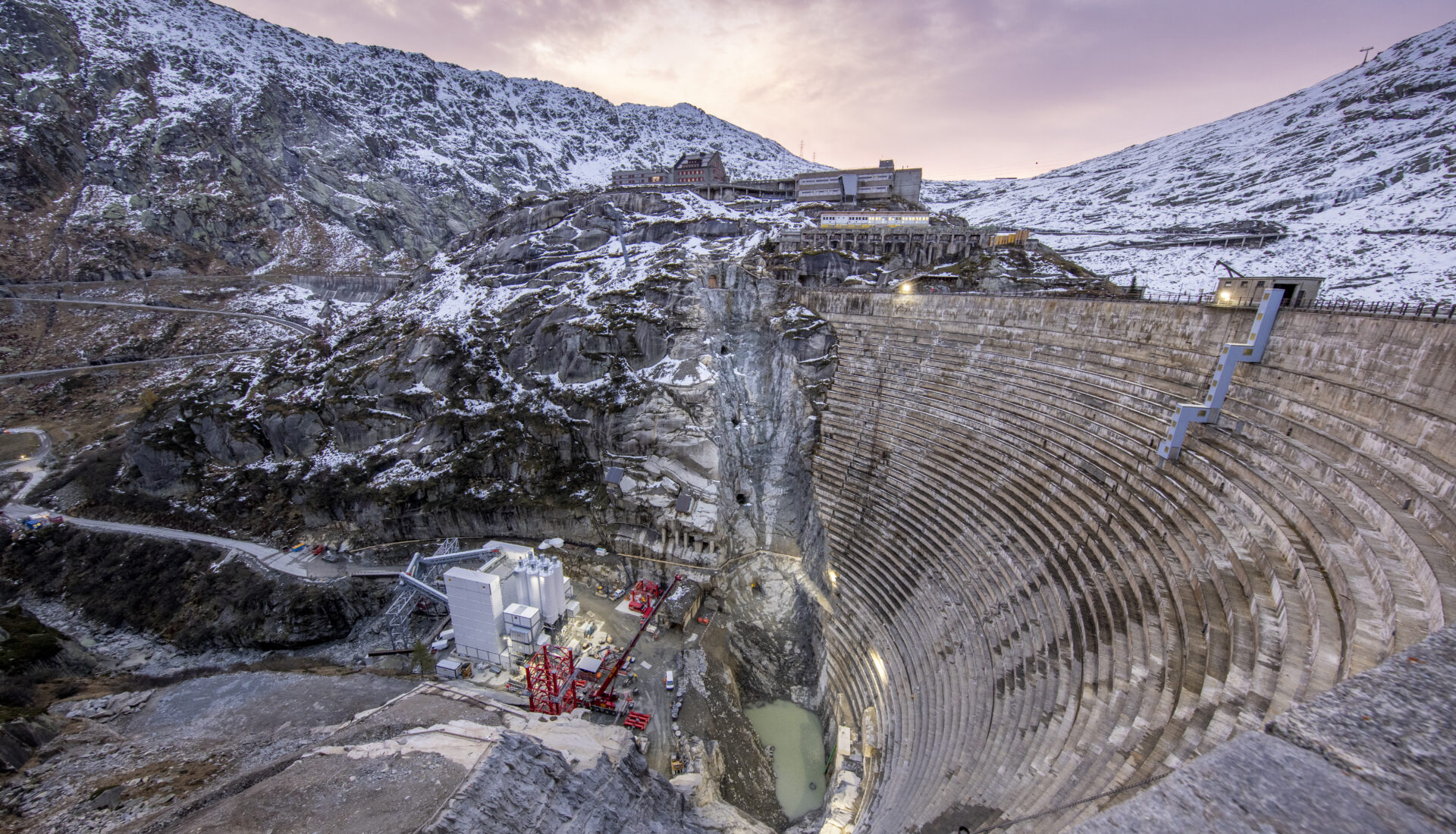The Valais-born ETH structural engineer Ralf Grand has been working as the Head Foreman at Kraftwerke Oberhasli AG (KWO) for eight years now. On the major construction site for the replacement of the Spitallamm dam, he coordinates, optimises and supervises the work carried out together with three other foremen from KWO. The replacement of the Spitallamm dam is his second major project for KWO, following the successful “Tandem” development project. In a brief interview with us, he provided us with a summary of the second construction season on the Grimsel.
The 2020 construction season has come to an end. What conclusions can you draw from it?
The 2020 construction season was a very good year for us. Less snow fell on the Grimsel than is usual in spring and we were able to recommence with the construction work earlier than planned. The main priority was the safety of the construction workers. We once again carried out blasting operations and various assembly work in parallel this year. We have achieved the targets we set ourselves for 2020 in full and with practically no accidents.
What were the most important milestones?
This year, we completed the excavation of the foundations. The excavation, i.e. the blasting operations directly in front of the existing dam wall with a dammed-up Lake Grimsel, was very challenging. There was zero tolerance for mistakes – the effects of the work had to meet very strict requirements, which we monitored by taking constant measurements. We have also more or less put the infrastructure in place for the concreting work being carried out over the next few years – namely the gravel quarry at Gerstenegg and the concrete plant at the foot of the wall. All of the plants are now calibrated and should be able to operate next year without any problems.

«I am delighted that we will be able to actually build something that can be seen. Up until now, we have only excavated and blasted holes and tunnels. (…) So there is very little evidence of what we have been working hard on for the last two years.»
What was your personal highlight of the 2020 construction season?
The highlight of the year for me was the fact that around 100 construction workers from the Grimsel Joint Venture worked on this structure every day and regardless of the weather, while showing a great deal of joy and dedication to their work. They deserve a big thank you!
One of the key elements of this season was also the concrete tests, as the quality of the various types of concrete is important. Can you provide us with an intermediate summary of this situation?
The concrete tests for the first and second phase were completed successfully. The tests revealed that we can create the type of concrete that we need using the rocks that we excavate on site. What’s more, we will, as things stand today, be able to process the concrete, which is very important. Based on our experiences, we will need to make a few minor adjustments in spring and we will then be ready to start the concreting work.
This year has been impacted by the coronavirus pandemic. What has this meant for the work carried out here on the construction site?
As a result of the coronavirus pandemic, we did not know at the beginning of the season whether we would even be able to start the 2020 construction season. This made planning challenging and we never knew if the designated equipment and the relevant staff would be able to enter the country. The Joint Venture subsequently drew up the requisite safety concepts, which together with the implementation of the usual hygiene measures and social distancing rules ensured that we had the situation well under control.
What makes this major construction site so fascinating for you?
The construction of a dam wall is in and of itself a fascinating feat. Added to this on the Grimsel is the fact that the dam wall is not being built in the open countryside, but rather directly in front of an already existing dam wall. This is a challenging prospect. And we are of course also delighted to be able to work overlooking this wonderful landscape. What more could you want?
You are finished with the spectacular blasting operations – will everything be a bit boring now?
Even though the blasting operations for excavating the foundations are now finished, we will have plenty to do on the construction site. There will also be more blasting operations carried out in the tunnels over the next few years. The focus now, however, will shift to the concreting work. And a structure that is more than 100 metres high and up to 220 metres long will definitely still pose us a couple more challenges.
What are you particularly looking forward to in the next construction season?
I am delighted that we will be able to actually build something that can be seen. Up until now, we have only excavated and blasted holes and tunnels. Of the tunnels, you can only see the openings from the outside; the rest is hidden in the mountain. Even when you carry out excavation work, you actually only really create a hole. So there is very little evidence of what we have been working hard on for the last two years. Our task now is to refill the excavated hole. The new dam wall will grow a little bit more after each completed phase and will soon be visible from afar.

